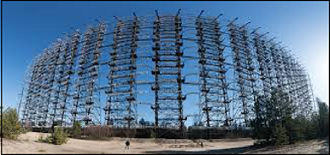
- Antenna Theory - Fundamentals
- Antenna Theory - Basic Parameters
- Antenna Theory - Parameters
- Antenna Theory - Near & Far Fields
- Antenna Theory - Radiation Pattern
- Isotropic Radiation
- Antenna - Beam & Polarization
- Antenna Theory - Beam Width
- Antenna Theory - Reciprocity
- Antenna Theory - Poynting Vector
- Types of Antennas
- Antenna Theory - Types of Antennas
- Antenna Theory - Wire
- Antenna - Half-Wave Dipole
- Antenna - Half-Wave Folded Dipole
- Antenna - Full-Wave Dipole
- Antenna Theory - Short Dipole
- Antenna Theory - Long Wire
- Antenna Theory - V-Antennas
- Inverted V-Antenna
- Antenna Theory - Rhombic
- Antenna Theory - Loop
- Antenna Theory - Helical
- Antenna Theory - Aperture
- Antenna Theory - Horn
- Antenna Theory - Slot
- Antenna Theory - Micro Strip
- Antenna Theory - Lens
- Parabolic Reflector
- Antenna Arrays
- Antenna Theory - Antenna Arrays
- Antenna Theory - Collinear Array
- Antenna Theory - Broad-side Array
- Antenna Theory - End-fire Array
- Antenna Theory - Parasitic Array
- Yagi-Uda Antenna Theory
- Log-periodic Antenna Theory
- Turnstile Antenna Theory
- Wave Propagation
- Antenna - Spectrum & Transmission
- Antenna - Types of Propagation
- Antenna - Lonosphere & its Layers
- Terms in Wave Propagation
- Antenna Theory Useful Resources
- Antenna Theory - Quick Guide
- Antenna Theory - Useful Resources
- Antenna Theory - Discussion
Antenna Theory - Antenna Arrays
An antenna, when individually can radiate an amount of energy, in a particular direction, resulting in better transmission, how it would be if few more elements are added it, to produce more efficient output. It is exactly this idea, which led to the invention of Antenna arrays.
An antenna array can be better understood by observing the following images. Observe how the antenna arrays are connected.

An antenna array is a radiating system, which consists of individual radiators and elements. Each of this radiator, while functioning has its own induction field. The elements are placed so closely that each one lies in the neighbouring ones induction field. Therefore, the radiation pattern produced by them, would be the vector sum of the individual ones. The following image shows another example of an antenna array.

The spacing between the elements and the length of the elements according to the wavelength are also to be kept in mind while designing these antennas.
The antennas radiate individually and while in array, the radiation of all the elements sum up, to form the radiation beam, which has high gain, high directivity and better performance, with minimum losses.
Advantages
The following are the advantages of using antenna arrays −
- The signal strength increases
- High directivity is obtained
- Minor lobes are reduced much
- High Signal-to-noise ratio is achieved
- High gain is obtained
- Power wastage is reduced
- Better performance is obtained
Disadvantages
The following are the disadvantages of array antennas −
- Resistive losses are increased
- Mounting and maintenance is difficult
- Huge external space is required
Applications
The following are the applications of array antennas −
- Used in satellite communications
- Used in wireless communications
- Used in military radar communications
- Used in the astronomical study
Types of Arrays
The basic types of arrays are −
- Collinear array
- Broad side array
- End fire array
- Parasitic array
- Yagi-Uda array
- Log-peroidic array
- Turnstile array
- Super-turnstile array
We will discuss these arrays in the coming chapters.